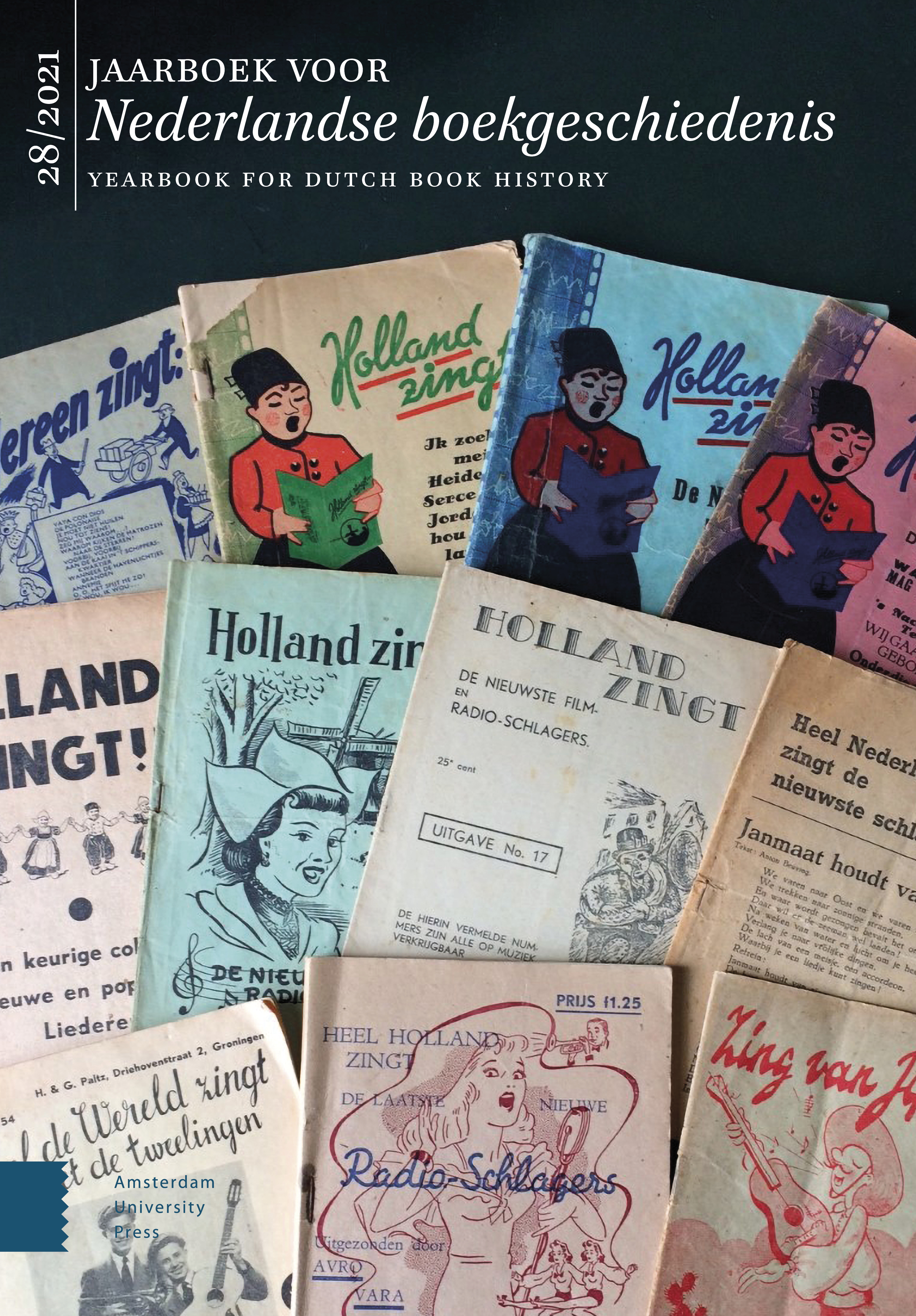-
oa Oblong formaten en liedboeken in de zestiende eeuw
Het Antwerps liedboek en het ontstaan van een conventie
- Amsterdam University Press
- Source: Jaarboek voor Nederlandse Boekgeschiedenis, Volume 28, Issue 1, Aug 2021, p. 10 - 40
Abstract
This article examines the earliest example of a Dutch printed songbook without musical notation in oblong format: Een Schoon Liedekensboeck (Antwerp, 1544), commonly known as the Antwerp Songbook. Its oblong format was probably inspired by music books, even if the advantages attached to this format only partially applied to songbooks without scores and notes. Even so, the Antwerp Songbook’s typography and lay-out do facilitate performance of the songs to some degree. Additionally, unlike contemporary books in oblong, this songbook’s title page is rotated 90 degrees to portrait orientation. This article contends that this hybrid shape underlines the book’s hybrid function: it was a music book intended for those who cannot or have no inclination to read music. Similarly, Een devoot ende profitelijck boecxken (Antwerp, 1539) stands out for having a comparable hybrid shape: it combines elements of music books (such as notes and the oblong format) with elements of vernacular song tradition and a title page in portrait orientation.


